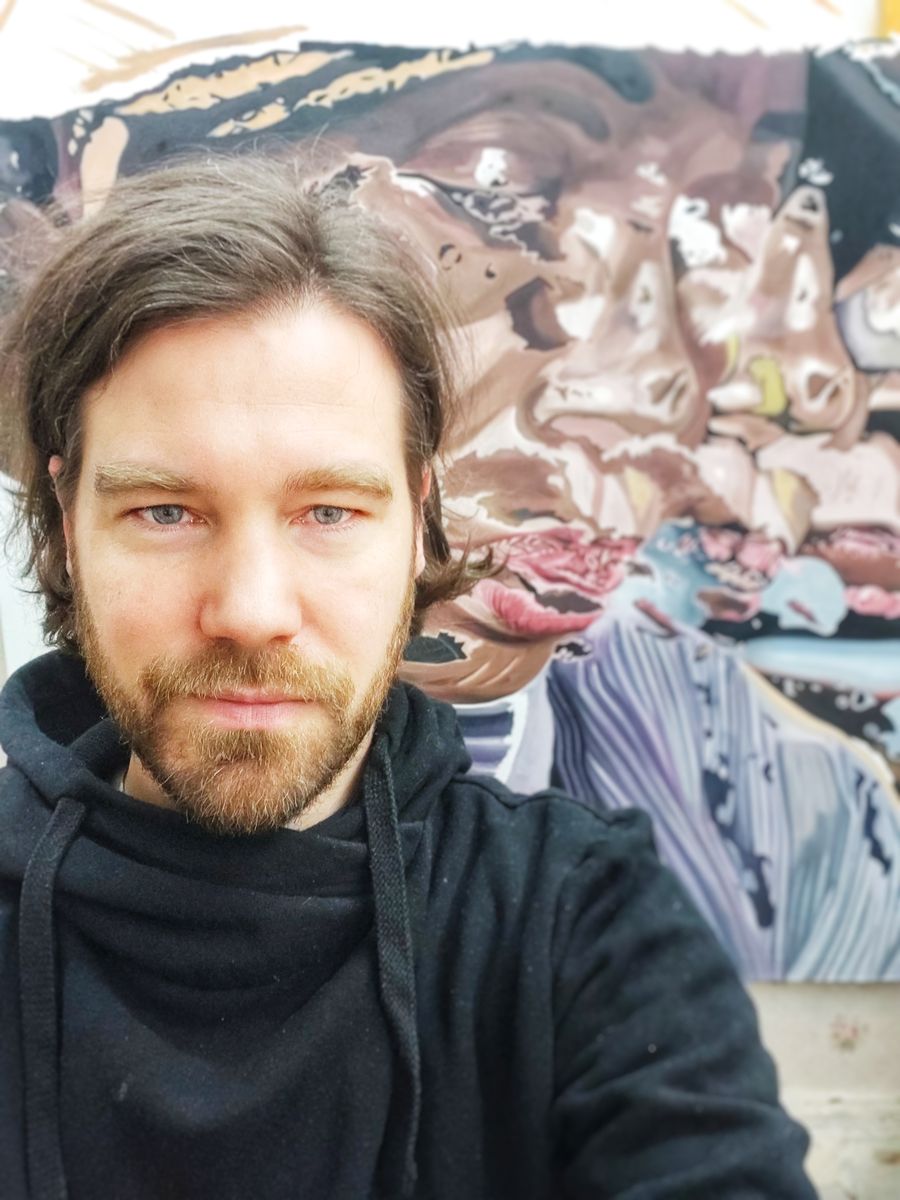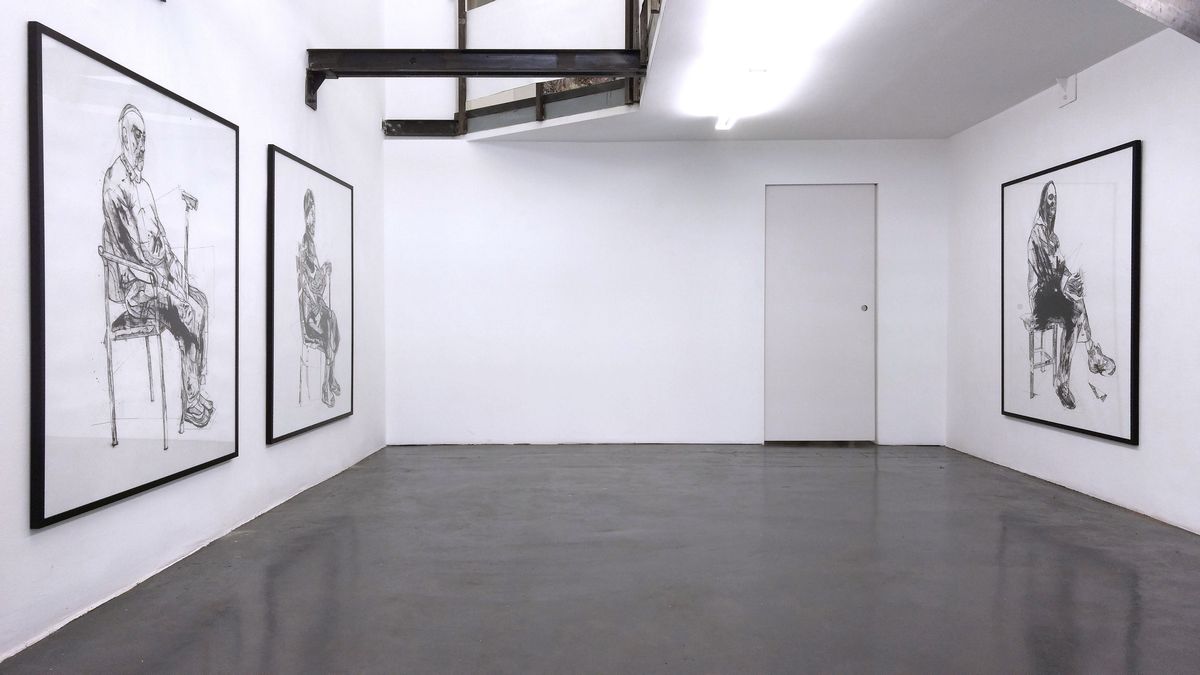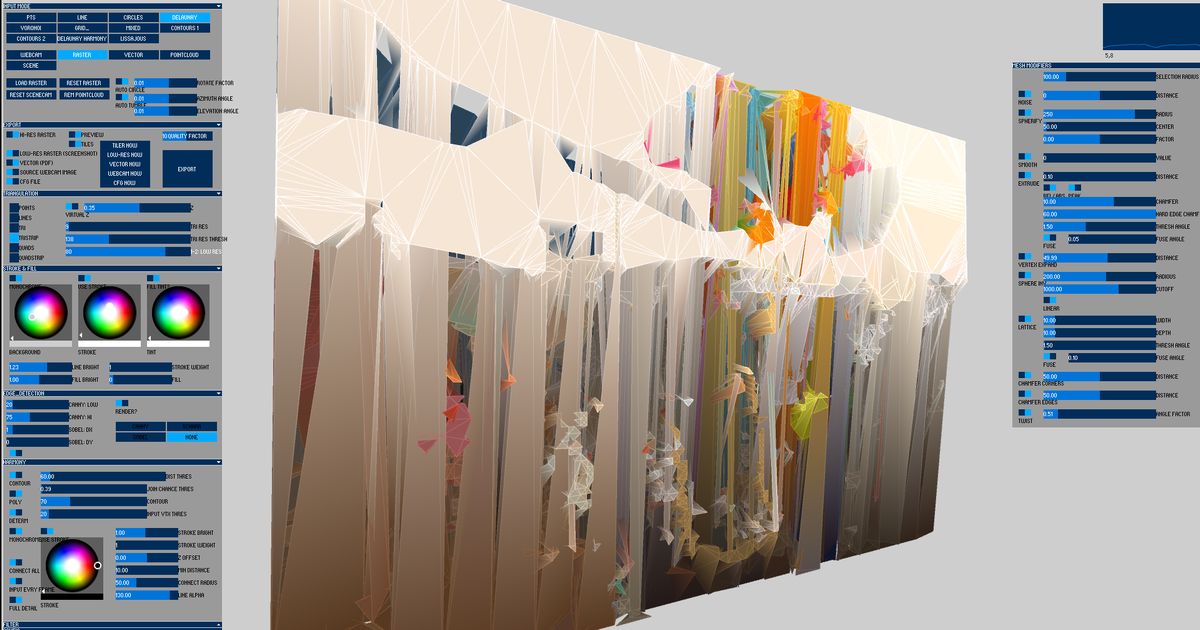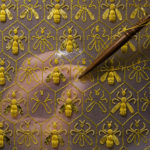MAGAZINE
Virtual Residency Chronicles: Christian Bazant-Hegemark
Virtual Residency Chronicles: Christian Bazant-Hegemark
This March the wendy.network is excited to welcome eight brilliant creative individuals as part of our first virtual residency. In this installment of the Virtual Residency Chronicles, we sat down with Christian Bazant-Hegemark, one of the residency’s guest faculty members, to find out more about his creative practice, what inspires him and what makes him most excited about the upcoming residency.
Christian Bazant-Hegemark is a visual artist and self-proclaimed storyteller. His artistic focus lies in the exploration of narratives and affects by merging traditional painting and drawing techniques with multi-layered digital practises.
Christian is a graduate of the Academy of Fine Arts in Vienna. His doctoral thesis delved deeper in the world of digital aesthetics with his “Painting and digital technologies” (Elisabeth von Samsonow, Felicitas Thun-Hohenstein, 2011-2015). His work in the digital landscape can be exemplified in his use of Sandy Noble’s Polargraph drawing machine, the Processing prototyping environment, and in his creation of Geometries Everywhere, a generative image and video abstraction software. Christian has also curated over forty exhibitions and has co-organized an artist-run space. He also writes regularly about the artistic field and manages a Youtube channel about creativity.
Your career is extremely interdisciplinary, from music, to the gaming industry and now to podcasts and Youtube, just to name a few. Do you look back at all these chapters of your artistic path as seperate domains, unconnected to one another, or perhaps more as a selection of tools in your creative toolbox?
It seems as if some people focus on diving deep into one medium, while others focus on a wider view of practices – I seem to belong to the latter group. I focused on music, drawing, painting, curating, etc. each for years. At one point though, it felt as if I had exhausted what I could do at that moment. So I moved further.
I keep returning to previous practices though, yet sometimes these movements take a while. I didn’t program for a decade, only to then focus on it again (and create all sorts of works) for three or four years.
Apart from my art practice, I always wondered about other creative individuals and how they manage their life. This curiosity led to curating, a YouTube channel, the podcast, the JOMO project etc. The focus with these endeavors is still on art, but with a different spin; here, it’s about understanding and connecting to other creative individuals.
Were these various changes in creative practice unexpected decisions or were they perhaps connected to personal ideas on ‘change’ and ‘growth’ ? Should an artist be in constant movement?
I don’t believe that artists should move incessantly, it’s probably way more important to increase our understanding of what resonates with us (specific practices, tools, media, collaborations etc) and play with it. Art doesn’t need ideologies, but openness and willful curiosity 🙂
I’m aware of the various creative practices I pursue, and the fact that it can seem scattered. Yet I do feel that from a humanistic point of view, all of these processes can be seen as acts of creation. It’s all personal expression – and while each medium differs formally and in regards to its history, one’s personal reason to use them can still be rather similar. In my case, I’d argue that I create to establish resonance with others, independent of the medium I use.
In your work you explore heavily the idea of creativity, particularly from individuals that do not necessarily come from the art world. What have you learned about the concept of creativity through all your discussions and do you believe that it is important to re-imagine creativity as something not exclusively attached to the arts?
I’d argue that there’s no necessity to see creativity as being exclusive to any specific medium, and for sure not to art. It’s needlessly excluding, and thus somewhat arrogant. There is a stereotypical view of artists as more creative than others – I don’t see this. Neurosurgeons, lawyers, architects, athletes – you can’t excel anywhere without being highly creative.
What I learned is a truism: creativity is hard. It’s rarely asked for, and often disregarded. If it comes ahead of its time it frequently stays misunderstood. In weird ways, creativity is related to your network and visibility: it’s hard to stay creative when your work stays invisible. Creativity and motivation are harsh siblings.
Much of your recent work is also concerned with deconstructing ‘the contemporary artist’ and the art world. Both in your upcoming book, your virtual conversation series and your online courses, you discuss elements of the art world (e.g. business, networking) that are not usually presented to artists during their academic years. Why do you think this phenomenon of the ‘unprepared artist’ exists?
My fear is that art schools have an (extremely) outdated idea about artists – a romantic notion that focusing on art practices alone could be sufficient. When I think about the 70+ graduates that finished art school with me, and how few of them still make art, I need to criticize art schools harshly. This is the norm: artists stopping their work, often forever, because they don’t manage to connect their voice to the world.
It’s common to blame them, the artist’s – but really it’s the institutions that fail them. How to price your works, when to start networking, understanding networking as a sustainable way of interacting with the world, how to judge galleries and other collaborations, how to discuss your work without banalizing its endless potentialities – these topics can be analyzed, presented and discussed. Art schools fail their students by not going there.
If you could offer just one recommendation to emerging artists globally, what would that be?
Work on forever deepening the understanding of your core values so that you can properly judge people and whether their way of interaction works for you – and then judge those in the art world in exactly the same way as you would judge anyone else. Psychotherapy can be a good tool for that.
Have you seen a change to your creative practice because of the global pandemic?
I started multiple projects that are primarily online. This wouldn’t have happened without Covid, there simply wouldn’t have been enough time for these experiments, and “online” meant something quite different just a year ago.
The wendy.network residency is formed as a collaboration between six artists and the creative guest faculty. What do you think is the most important element when working with other creative individuals and do you think there are added elements when working virtually?
I wouldn’t differentiate between virtual and real when it’s about connecting to others. You either resonate, or you don’t.
This then would be my advice: see with whom you resonate, and whether mid- or long-term connections want to establish themselves.
What drew you to collaborating with the wendy.network?
It’s unusual to start a project that aims to connect people online, when social media has such a head-start. But of course there are benefits to having another platform, and wendy.network seems to grow unusually quickly. I’m rather excited about who I’ll get to meet through Wendy!
Is there anything you hope to gain from participating in the virtual residency?
I’m looking forward to engaging with artists internationally, and to gain deep insights into their practices and thoughts.
For more details about Christian’s work, the virtual residency, the guest faculty and our six resident artists, stay tuned on the wendy.network.



